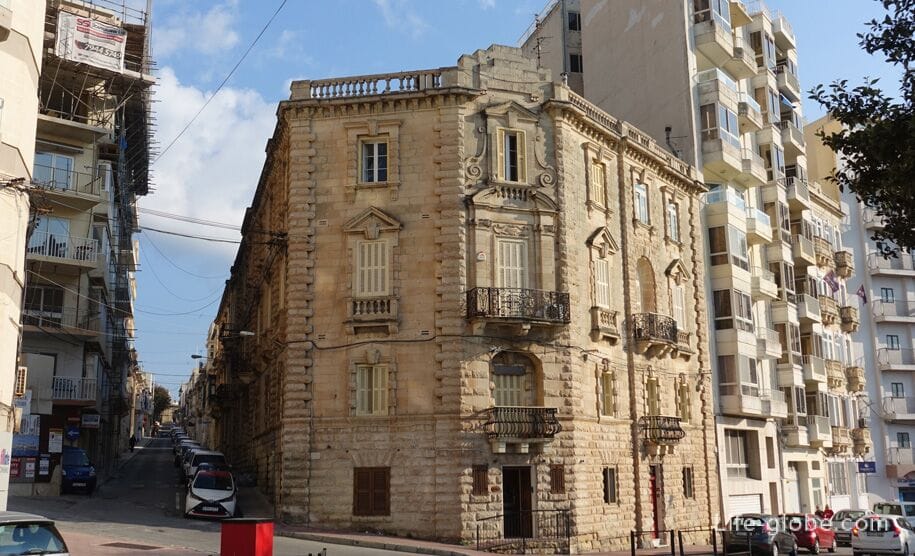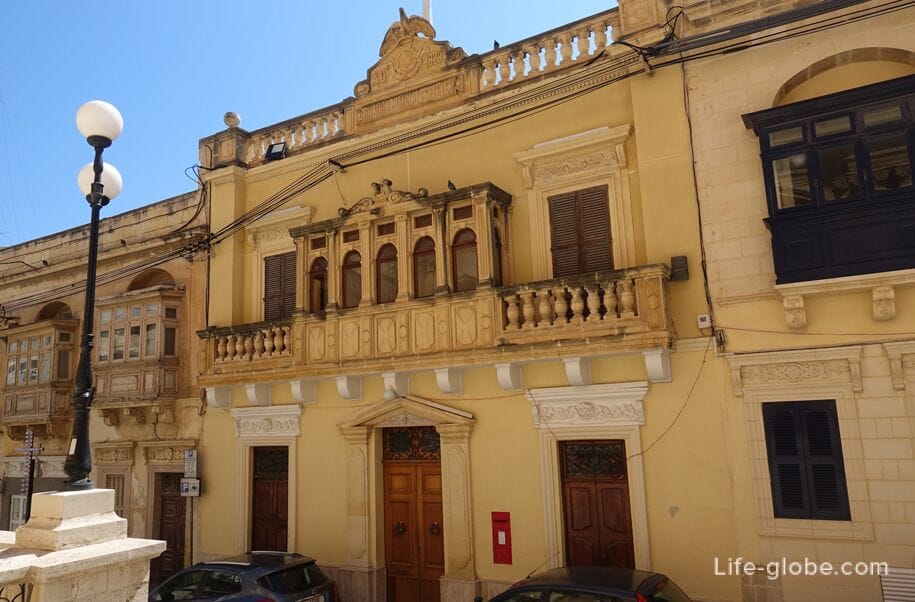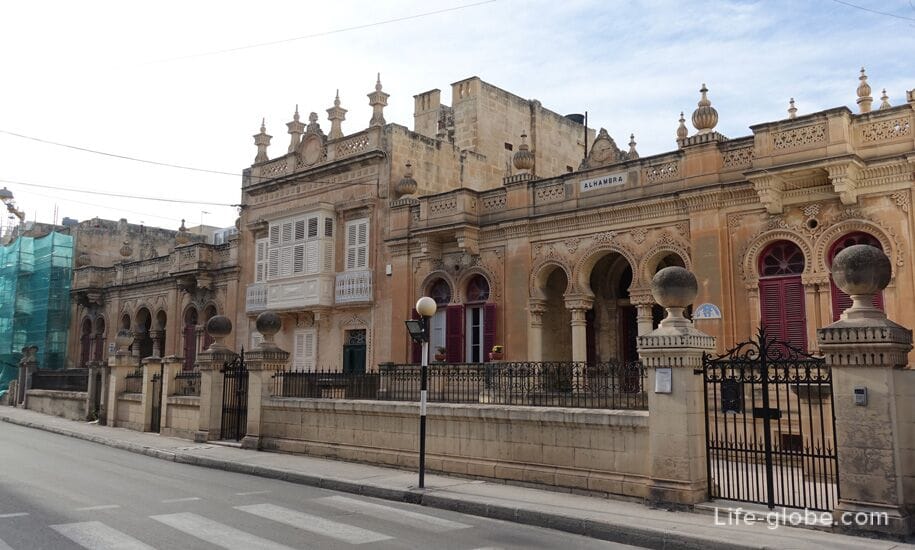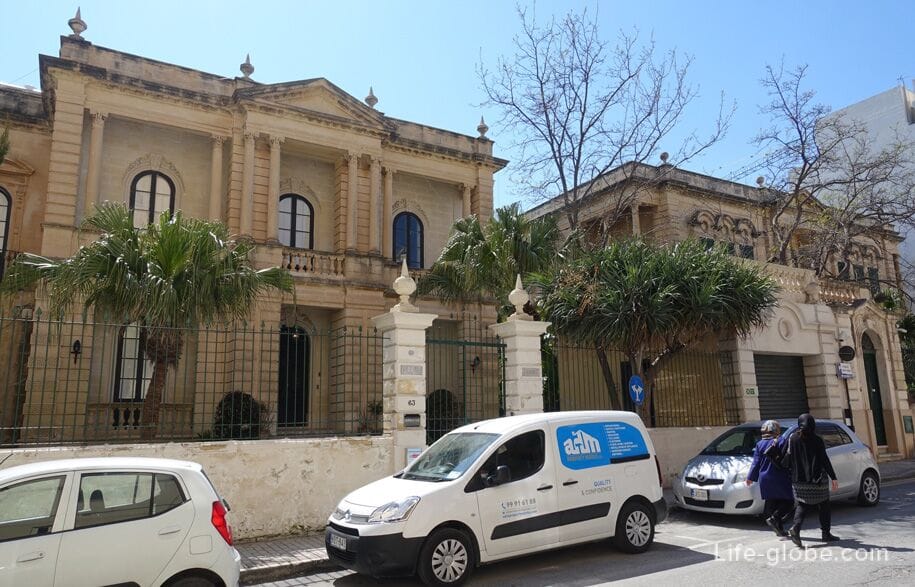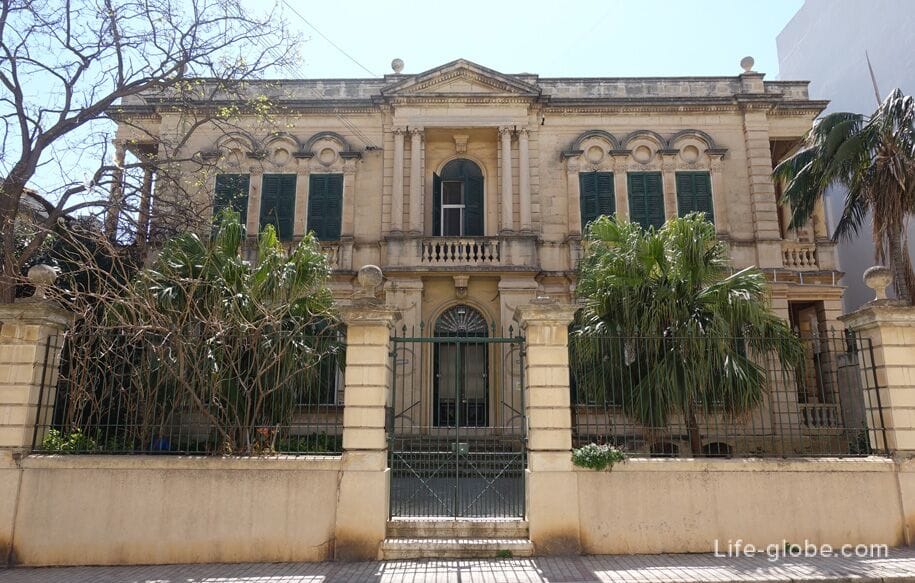
In the Maltese town of Sliema, besides the beaches and the promenade, which runs along almost the entire coast of the city and are the main places for walking and recreation, and there are sights of interest among the guests. Read more about the beaches and waterfronts of Sliema...
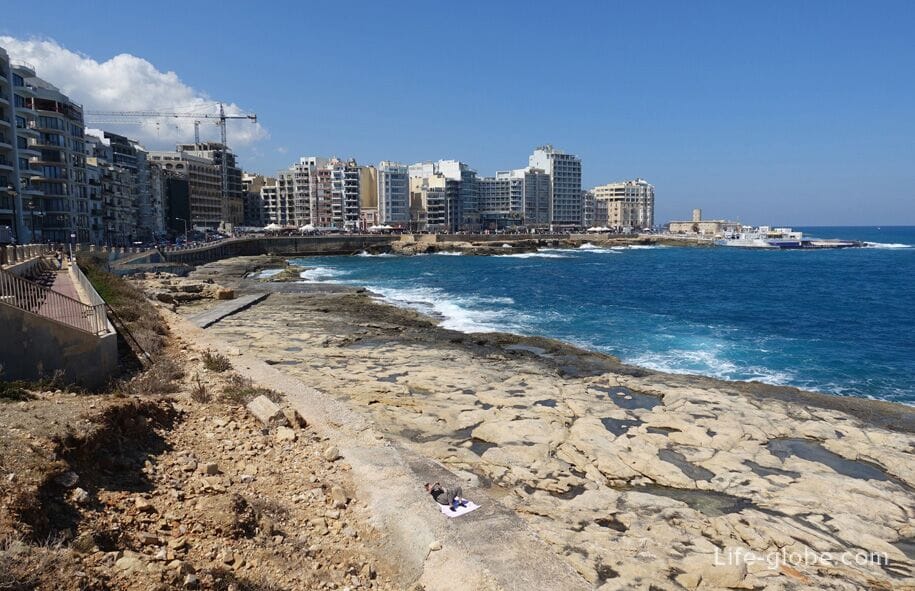
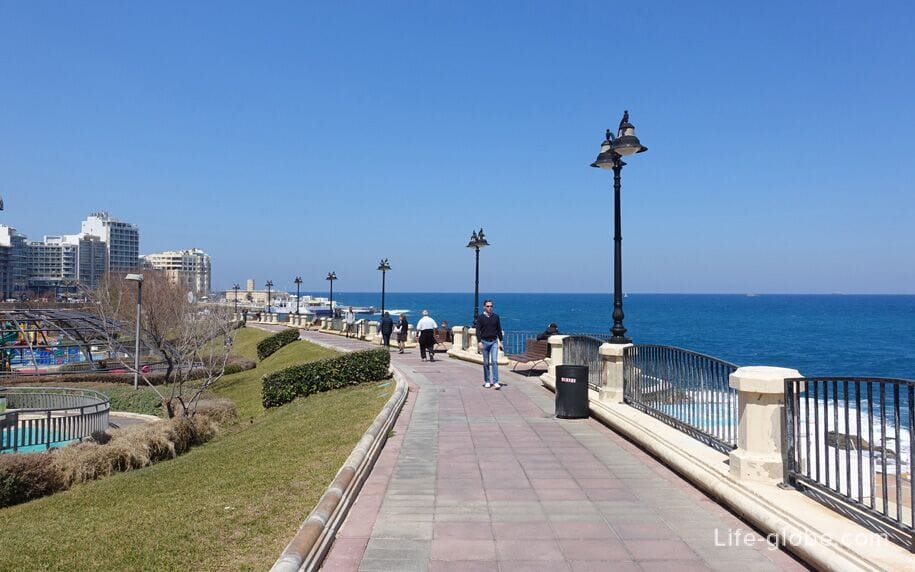
Parish Church of Jesus of Nazareth (Parish Church of Jesus of Nazareth) is situated on the main promenade of Sliema and is a definite decoration.
The Church was built in 1895, and in 1908, given to the Dominican monks, and in 1973 it became a parish Church.
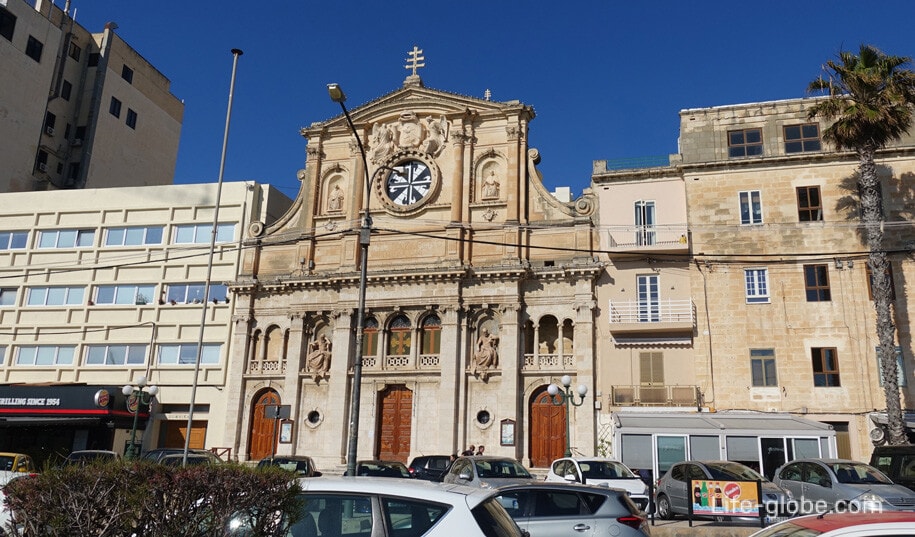
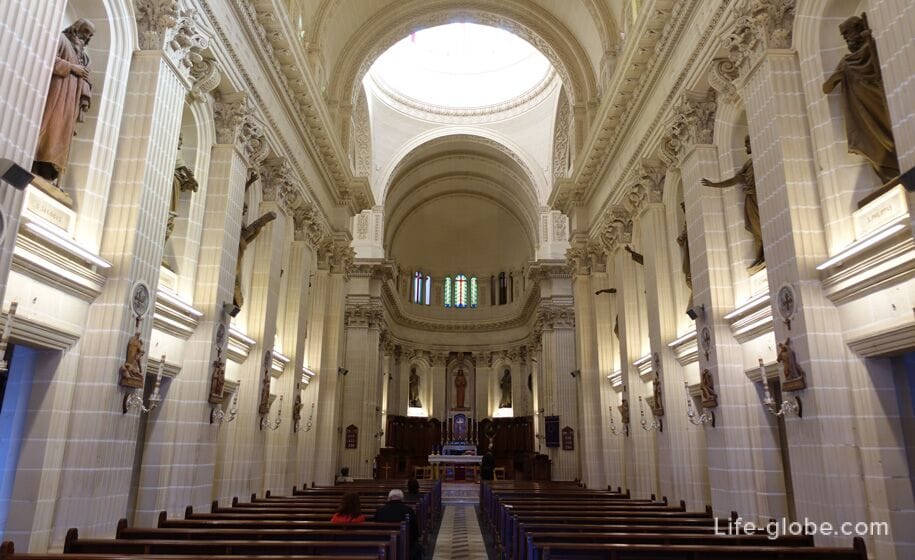
Tigne Fort (Fort Tigné) - polygonal Fort built by the knights of St John between 1793 and 1795 years to protect the entrance to Marsamxett harbour.
This Fort is one of the oldest polygonal FORTS in the world. The Fort was heavily modified by the British in the 19th century and remained in use by the military until 1979. The Fort was restored in the early 21st century.
The Fort is located near the Mediterranean sea on the Peninsula Tigne at the entrance to Marsamxett harbour.

Tigne Peninsula or Peninsula Tignes / Tignes-point (Tigné Point), the edge of which is also known as Cape Dragut / Dragut-point (Dragut Point) is the southernmost point Sliema, located at the entrance to Marsamxett harbour.
The area was originally occupied by several fortifications and British barracks complex, which was abandoned for many years until the region was rebuilt in the early 21st century. The area now contains a modern building and is popular with locals and tourists.
Cape Dragut are walking area, near the waters of the Mediterranean sea, the area beaches with large flat stones. With the nose of the headland views of Valletta, located on the opposite side of the Bay of Marsamxett.
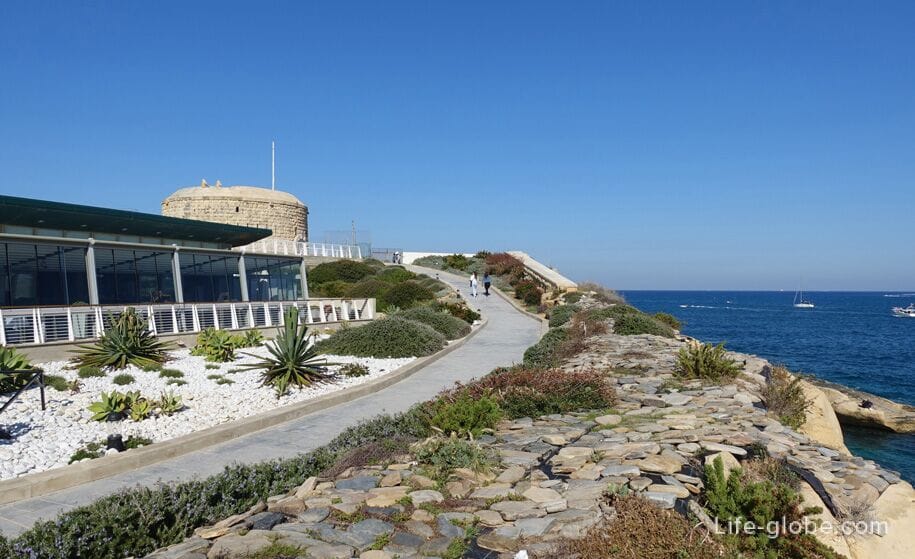

Battery point Sliema (Sliema Point Battery) and artillery battery (Fortezza), built by the British between 1872 and 1876 years to protect the island, in the framework of the improvement of the fortifications of Malta. Later, the battery was used as spotlight, and now it's a restaurant known as Il-Fortizza (the Fortress).
The battery has a lot of architectural elements of Gothic revival, such as the main gate.
The battery is located on the Sliema promenade, near the beach of Fond Ghadir.
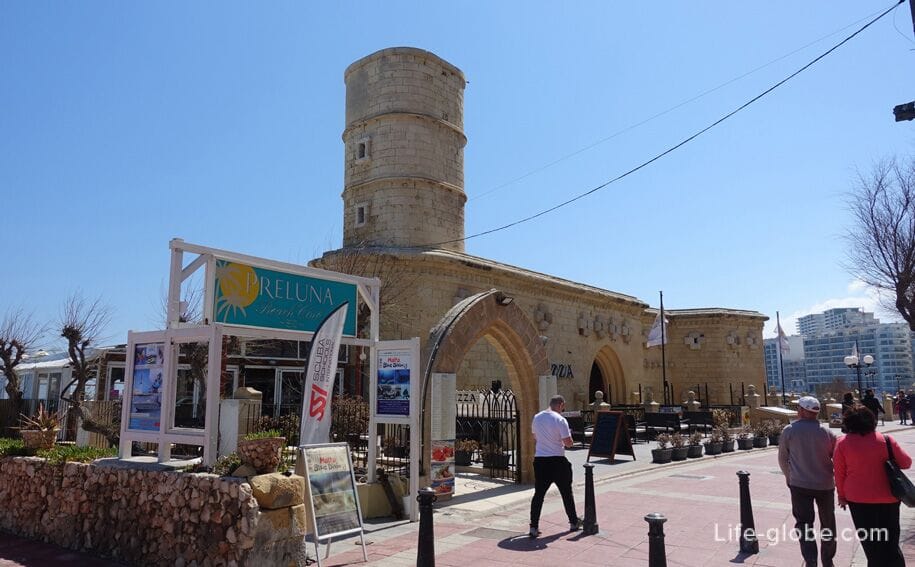
The tower of St. Julian (Saint Julian's Tower) is one of the main attractions of the city, located directly on the boardwalk. This is one of the former guard towers of Malta built in 1658 to protect the nearby of the eponymous St Julian's Bay.
In 1715 the tower was built artillery battery. Today near the tower is a restaurant-eatery, known as restaurant It-Torri.

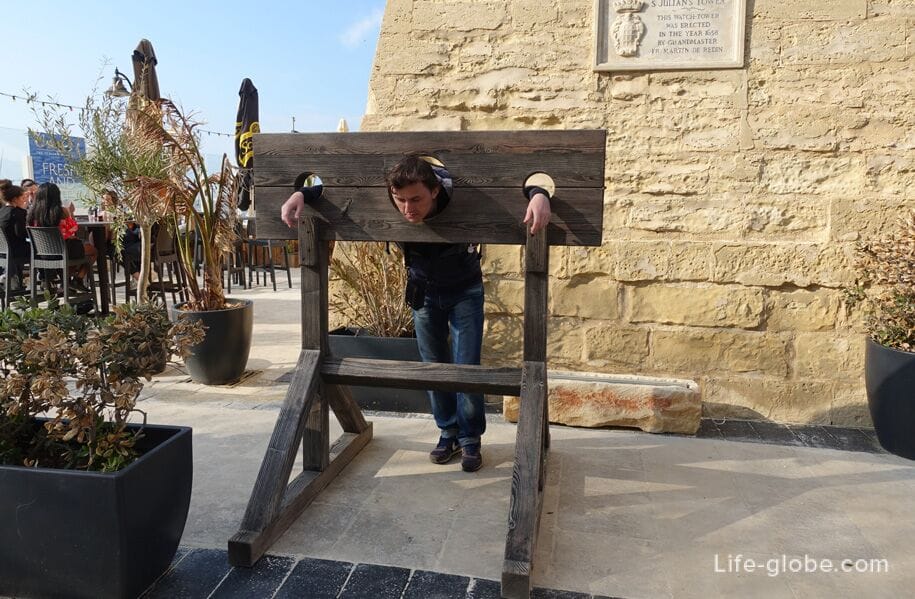
Roman baths (Roman baths) are recesses in the rocky coast, now heavily used by vacationers, as they hits the sea water which warms up and it turns out, something like a kind of natural swimming pools.
Baths are located on the beach of Fond Ghadir, near the battery Sliema point.
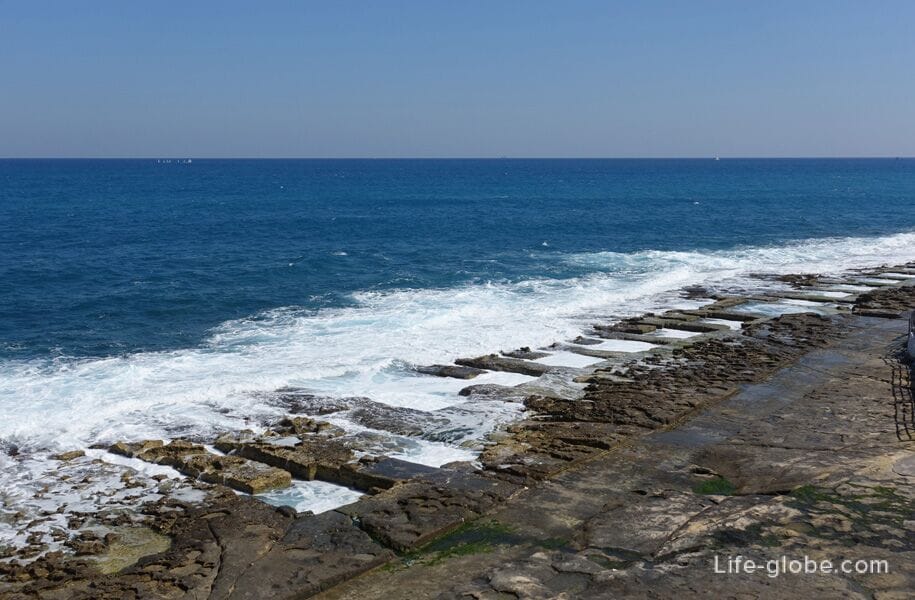
Monument to the "White shadows" - three-dimensional sculpture, the work of the famous modern architect Richard England located on Sliema's seafront promenade, tower road.

The old station of purification of sea water where you can see the date 1881.
The station building is close to main promenade, close to the Church of Jesus of Nazareth.

Independence Gardens - a park and recreation area located near the coastal strip of the city, almost on the border with the neighboring city of St. Julian's.
In the Park there are: pedestrian zones, places for rest, playgrounds, food stalls and drinks, as well as toilets and a small fountain.
Below the level of the Park, along the sea, equipped with walking trail, there is a beach area with a railing, for more convenient entry into the sea. The beach is rocky. Read more about gardens of Independence in Sliema...
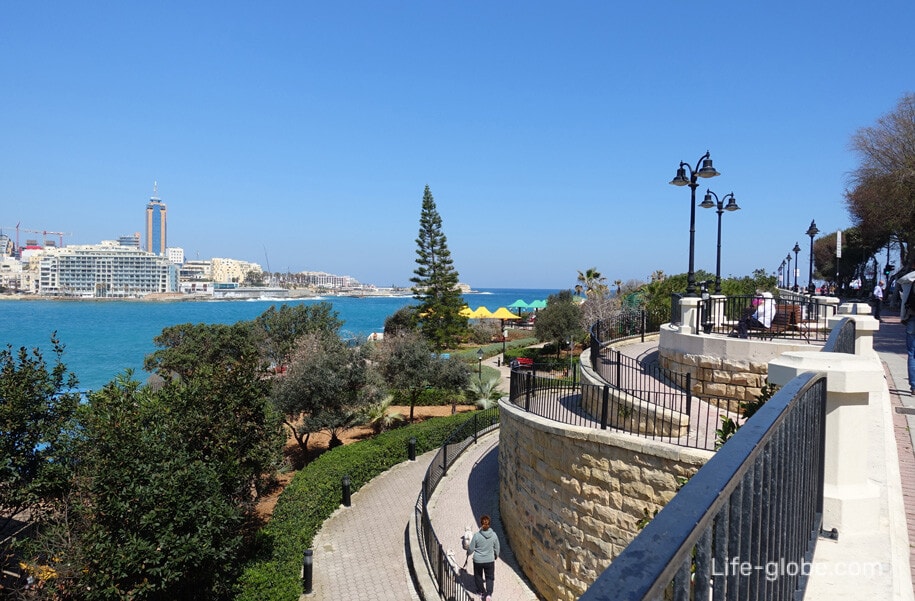


Bridge Tigne (Tigne' Pedestrian Bridge), part of which is the famous observation deck. Opposite from the ground side of the bridge leads to the shopping center the point Shopping Mall. From the embankment to the bridge you can climb the stairs or the Elevator.
The bridge offers views of the Bay of Marsamxett and Valletta.
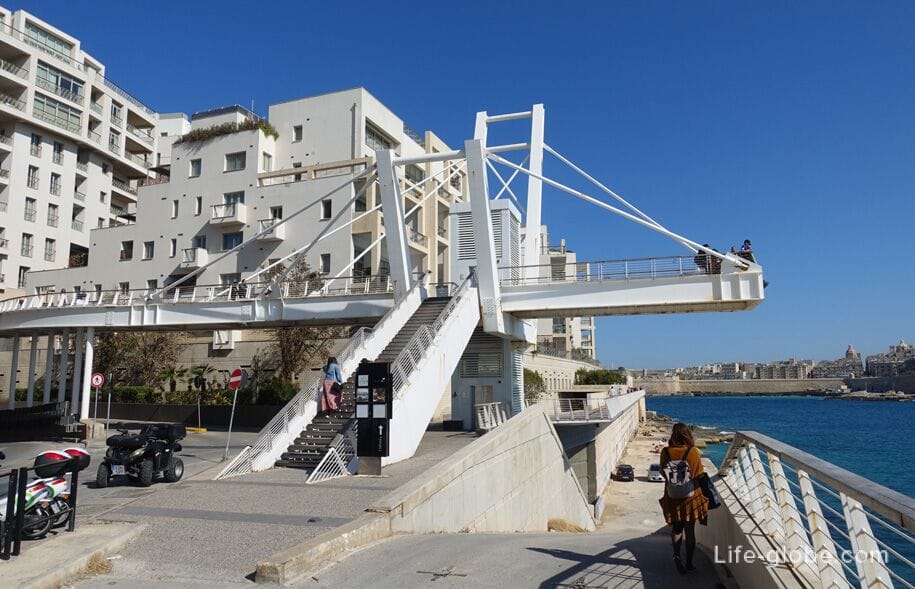
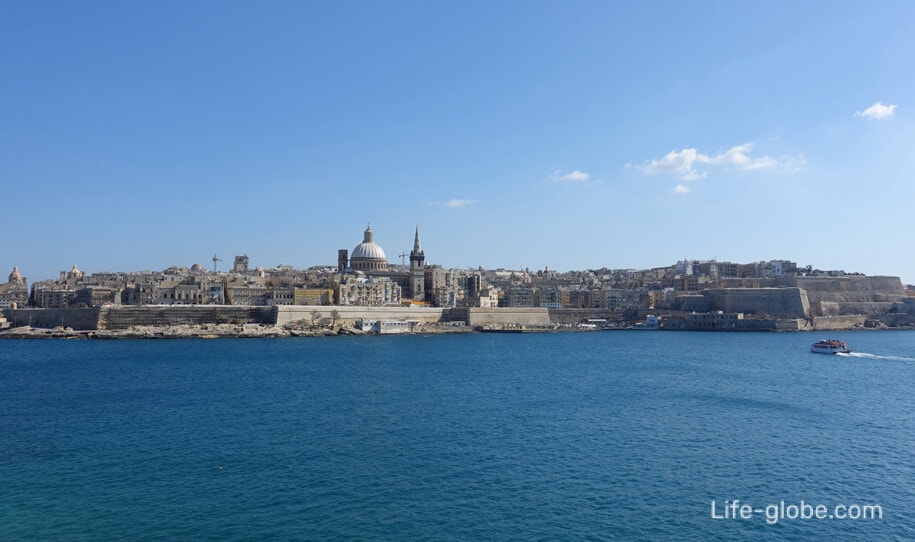
Palazzo Capua or Capua Palazzo (Palazzo Capua) - neoclassical Palace with columns on the facade, the beginning of the 19th century, built by the banker, who named it Selma Hall . Later the Palace passed into the possession of the Prince of Capua, Carlo de Bourbon and his wife, after whom the Palazzo still bears the name.
During construction, it was the most attractive building in the area, surrounded by extensive views of the countryside, when a large part of Sliema was still underdeveloped. The territory in which the Palace was built during the 19th and 20th centuries.
Currently the Palace is surrounded by dense buildings, the building houses 4-star boutique hotel AX Palazzo Capua with rooms and suites, and in the former Palace and gardens built St. James hospital Capua.
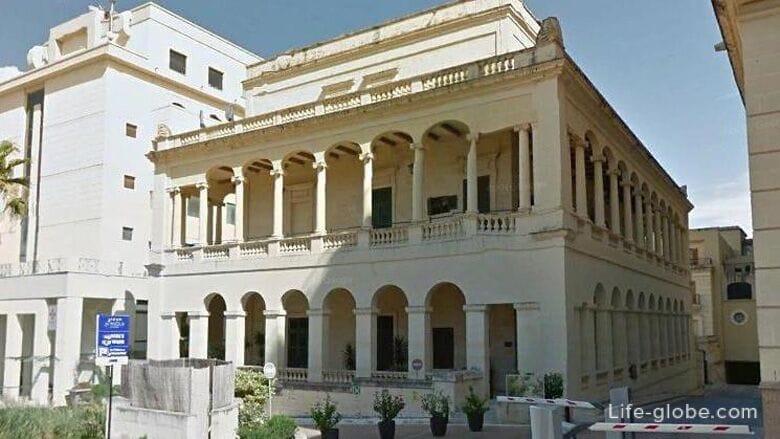
The garrison chapel of St Luke (St Luke's Chapel Garrisson) - a small Church, erected during the expansion of Tigne Fort and was originally part of a barracks used by the British army until 1979.
The first stone of the chapel was laid on January 16, 1910, the Governor of Malta, sir Leslie Random. The Church was built to service the British army, stationed in the barracks of Tina, only for the military. The chapel was finished in a few months and opened for the first worship service on Sunday, November 27, 1910.
It is now defunct Anglican Church, whose building is no longer used for religious purposes.

The area of Saint Anne or St Anne's (St. Anne Square) is a small lively Plaza, located near the Central promenade of Sliema.
The area is decorated with a fountain-monument and the historic Majestic theatre (Majestic theatre), on the ground floor which are now a shop and cafe.

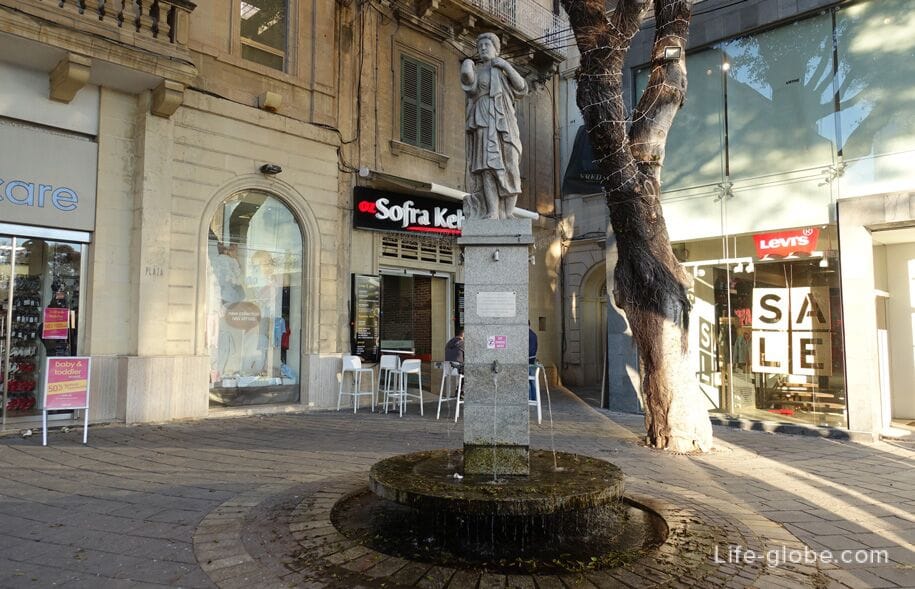
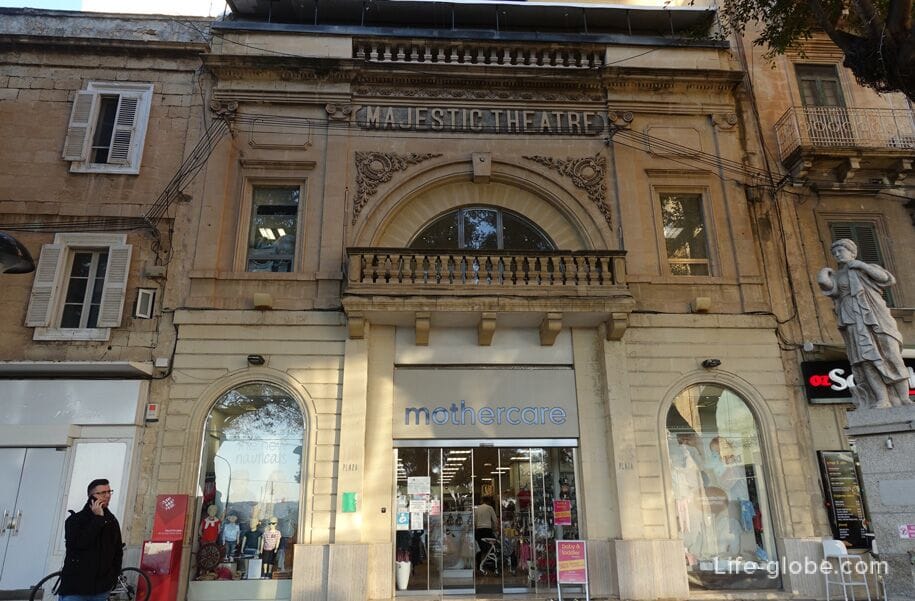
The parish Church of Stella Maris or the Church of our lady (virgin of the Star of the Sea) (Stella Maris Church / Knisja tal-Verġni Marija Kewkba tal-Baħar) is a Roman Catholic parish, the oldest parish Church Dating from 1878 year.
The construction of the Church began in 1853, when the population of the small village of Sliema began to grow. The villagers appealed to the religious authorities with the petition for the construction of a larger Church that meets their spiritual needs. Permission was granted on the condition that the new Church is dedicated to St. Paul. For this purpose, the diocese of Malta also donated the land on which was to be built a new Church. However, the villagers were very devoted to the mother of God and wanted their main Shrine was named in honor of their patron Saint.
29 April 1853, he laid the first stone of the new Church, dedicated to our lady Stella Maris. Two years later, construction work was completed. On 11 August 1855 the Church was opened for public worship. A week later the first titular feast was celebrated both inside the Church and outside it, marking the birth of the Sliema community.
The population of Sliema continued to grow rapidly, resulting in a required expansion of the Church. By 1877, the Church reached its present size, crowned with a majestic dome. The work was completed by the time when among the residents of Sliema have been collected the petition to erect their Church to the rank of parish Church. At Christmas 1878, the long-awaited desire was fulfilled, and Sliema had a parish Church.
During the subsequent history of the Church are decorated with various works of art, particularly paintings of the apse by Giuseppe Cali and the statue of our lady Stella Maris, which was brought to Sliema from Paris in 1891. This statue is annually carried in procession through the streets of Sliema on the 3rd Sunday of August is celebrated as a holiday.
The Church was seriously damaged during the Second world war on March 2, 1942. In addition to the structural damage was lost and various works of art. Thanks to the efforts of the parishioners repairs started immediately, and by December of the same year the Church was partially opened again.

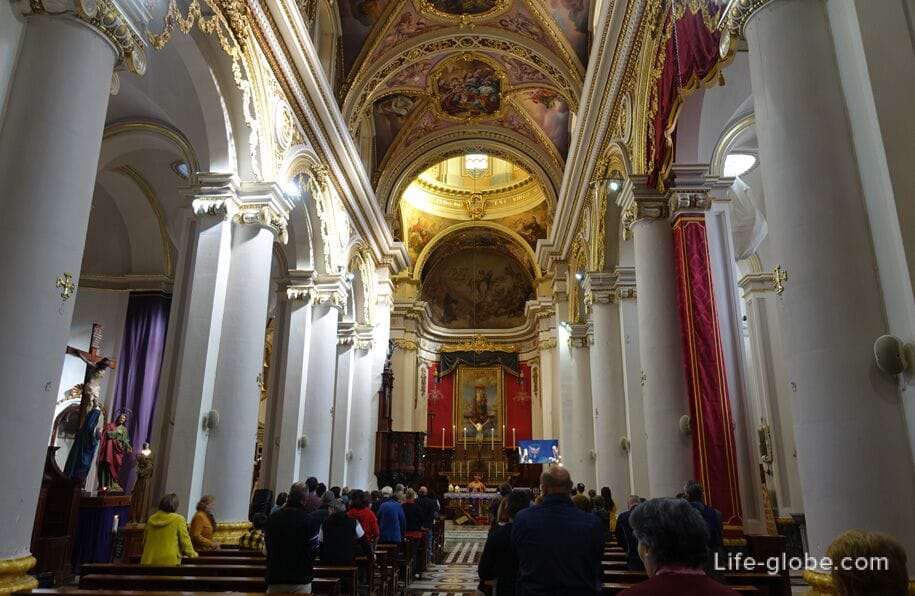
The chapel of our lady Madonna (Chapel of Our Lady of Grace Il-Madonna Tal-Grazzja) - a small chapel opposite the Church of Stella Maris.
A small marble slab on the floor of the chapel has a Latin inscription which reads: "In 1856 and was brought here the remains of two priests and another man, was found near Fort tine".
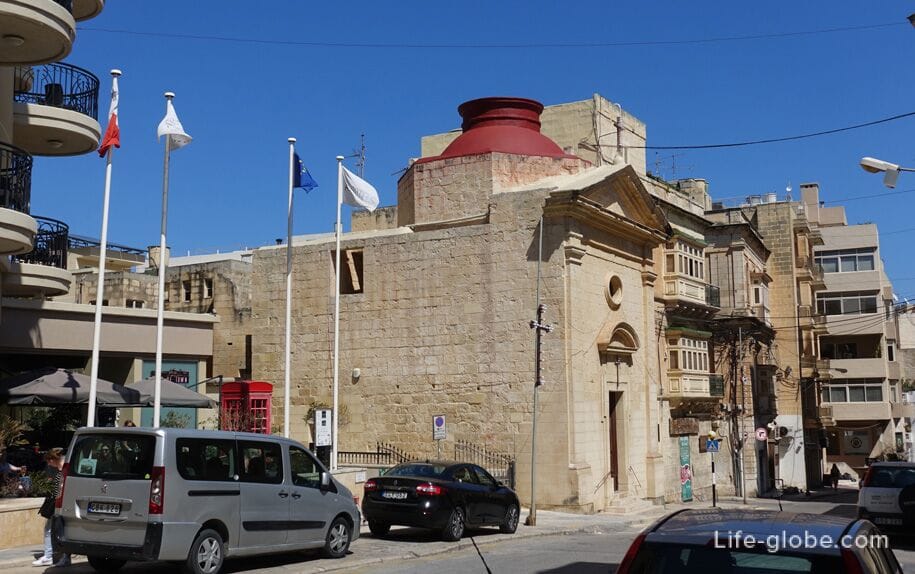
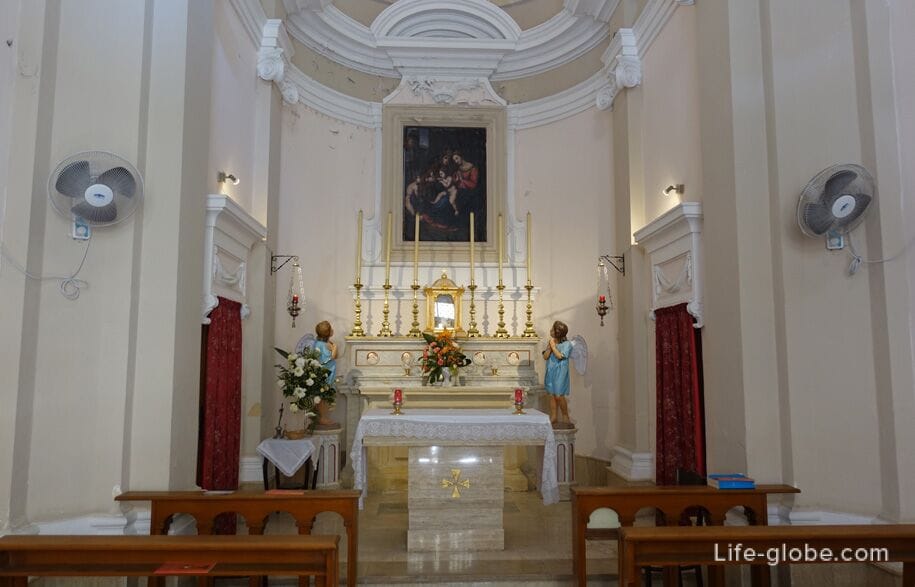
The Church of the blessed virgin Mary or Church of the sacred Heart of Mary (Sanctuary of Our Lady of the Sacred Heart / Knisja tal-Qalb Imqaddsa ta' Marija) was founded in 1877, and since 1918 is now the parish Church.
The Church was built between the years 1877-1881. And six months after the erection, in November, 1881, was transferred to the Maltese province of the Small brothers.
In 1930 the Church was enlarged to cope with population growth.
The Shrine is built in the Roman-ionic style, with gilded sculptures and decorative paintings. The dome is decorated with paintings of various Franciscan saints, and on the ceiling depict episodes from the life of the virgin Mary. In the altar are five paintings by the Maltese artist Giuseppe Cali, one of which is his masterpiece, representing a half-naked St. Jerome in a grotto in Bethlehem. The statue of our lady of the sacred Heart was made by the Maltese artist Girolamo Darmanin in 1879 and brought to Church on 26 June 1881, the day when the Church was consecrated and opened for worship.
During the Second world war the Church was badly damaged and the Franciscan monastery were completely destroyed. Father is a Franciscan and another 22 people died under the debris.
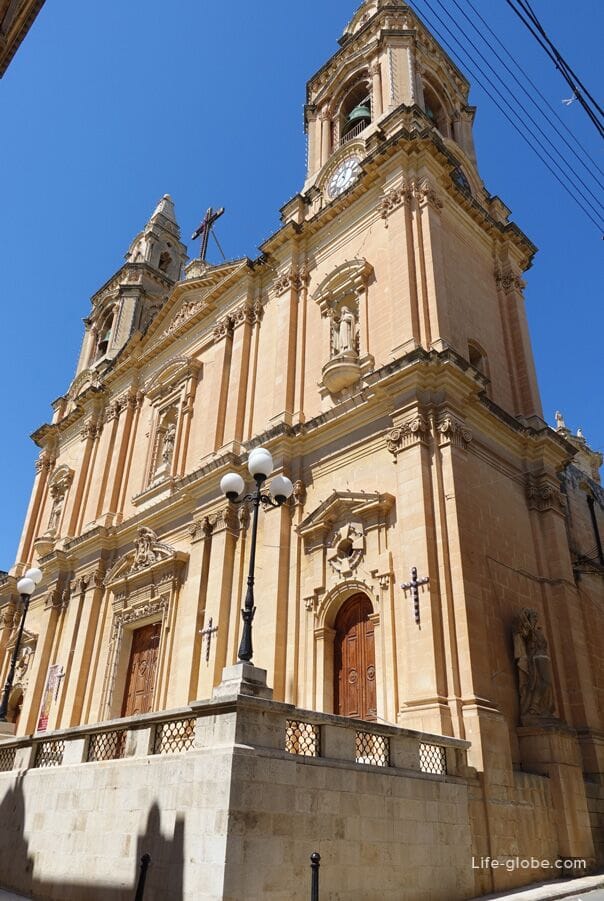

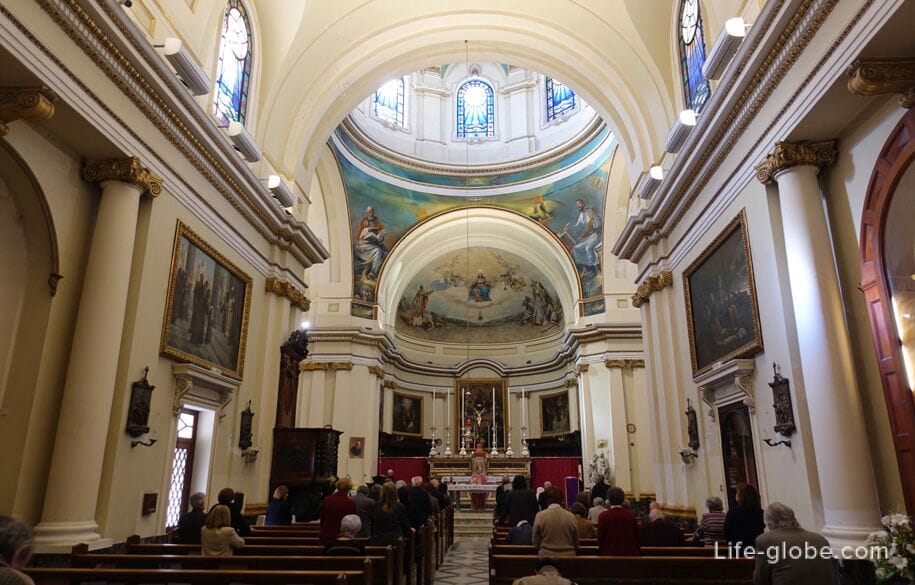
Roman Catholic parish of St. George the Great or the parish Church of Saint Gregory the great (St. Gregory the Great / Parrocca ta' San Girgor il-Kbir) is the fourth, but not least, the great Church in Sliema.
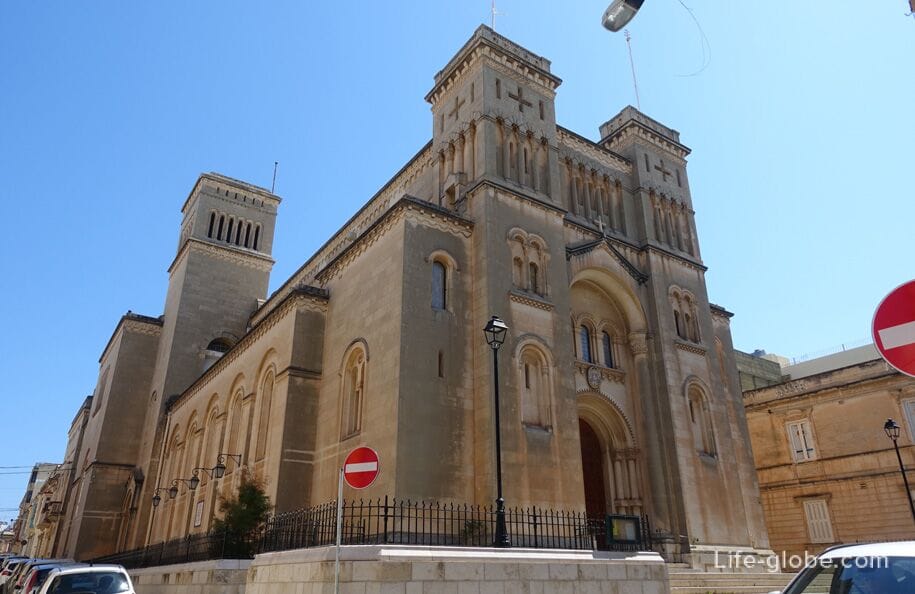
The Anglican Holy Trinity Church (Holy Trinity Anglican Church) was built in 1866 on the street Rudolph, practically on the border of the cities of Il-gżira and Sliema.
The land on which to build the Church and the adjacent Bishop's house, was purchased by Jane Trower, daughter of the Bishop of Gibraltar Walter Trower for 1050 pounds. She had intended to donate the property of the European diocese, but the law allowed an unmarried woman to make a donation in excess of £ 50. Thus, her father became a member of the Dar.
Architecture, which made the Church of the Holy Trinity, is not common in Malta, rather, it resembles an English village Church.
The Church was completed in 1866 and consecrated on 23 April 1867 by the Bishop of Gibraltar Walter Mourning.
The building adjacent to the Church known as the Bishop's Home, which was built in 1855 as the residence of the vicar. Today the building still serves the same purpose.

Parish house Ursule St. Angela Merici mother's House (Ursulies of Saint Angela Merici Mother house).

The Salesian school of St. Patrick's, located next to the parish house (St Patrick's Salesian School) is a school managed by the Salesians of don Bosco, which is the Roman Catholic St. Patrick's Church (St. Patrick's Church).
The school building is a historical object.
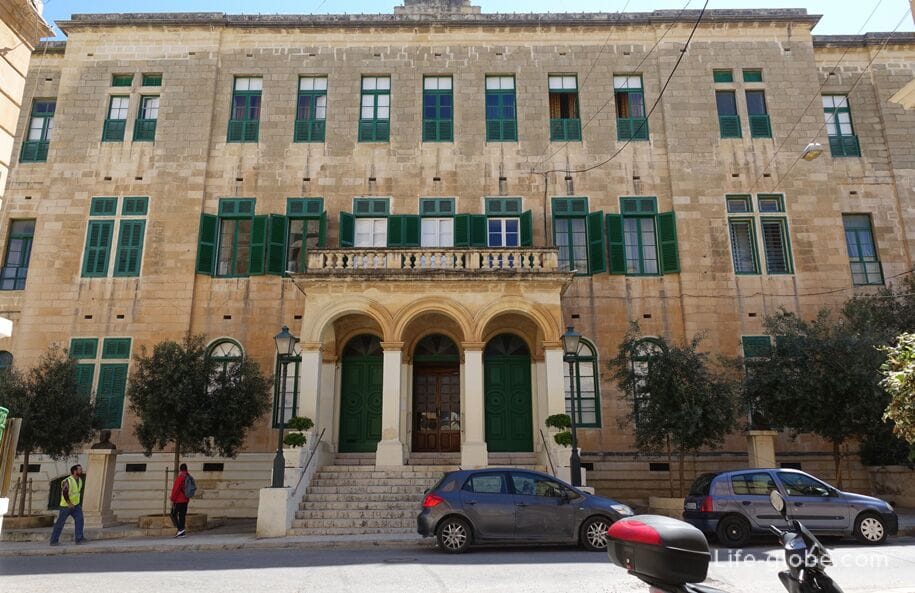
Salesian theatre (Teatru Salesjan) theatre, one of the old buildings in the old part of Sliema, which has more than 110 years.
The first stone of the building was laid by local philanthropist Alfons Maria Galea in 1907. The theater was built in 1908.
The building has changed little since the early days: the scene has expanded, new space, moved the bar and have changed the show, which to this day are held at the theater. Now the theatre opens its arms to not only the local community but around the world. International artists and companies performed and continue to perform on its stage.
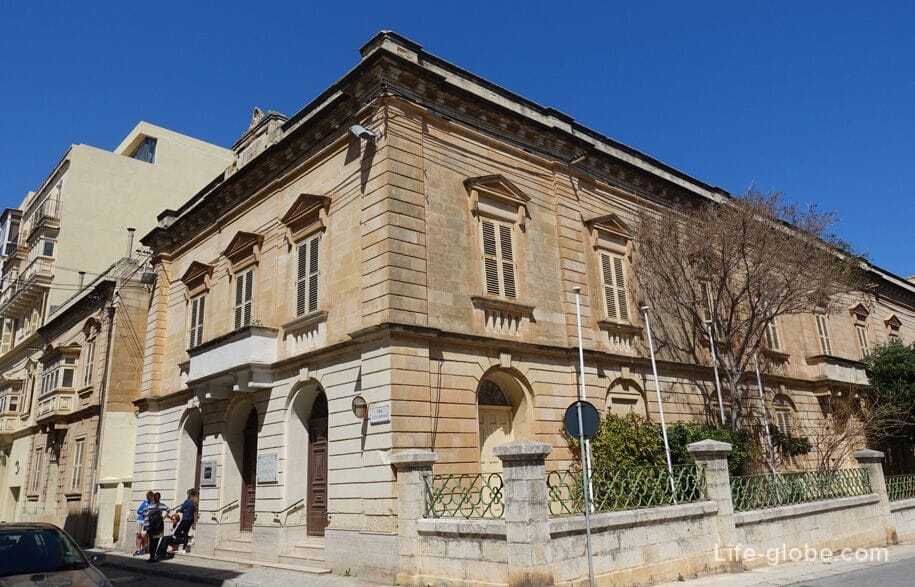
In the historical part of the city of Sliema are also other old architectural sites, including buildings and villas, representing historical monuments (for example, a historical monument Dingli Circus).
To see them all, just to deviate from the main promenade, taking a closer look at the city and walk in the streets of "Old rocky".

